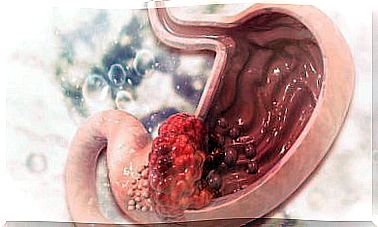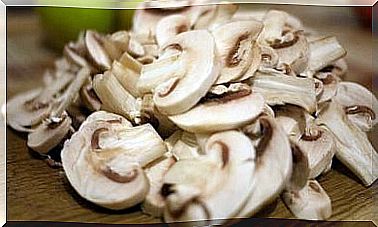What Properties Do Lentils Have?
Lentils are legumes that are low in calories and rich in protein, making them a healthy option to include in a healthy diet. In addition, they are rich in many essential nutrients.
100 grams of lentils contains 28 grams of protein and 1 gram of fat. It also has 67 grams of carbohydrates and 1 gram of fiber, which can be both soluble and insoluble. They have no cholesterol and are low in salt, according to this study by the University of the Americas Puebla (Mexico).
Vitamins and minerals in lentils
This legume contains high levels of molybdenum, specifically 148 mcg, which is approximately one third of the recommended daily amount. This mineral is necessary for the metabolism and absorption of iron in the intestine.
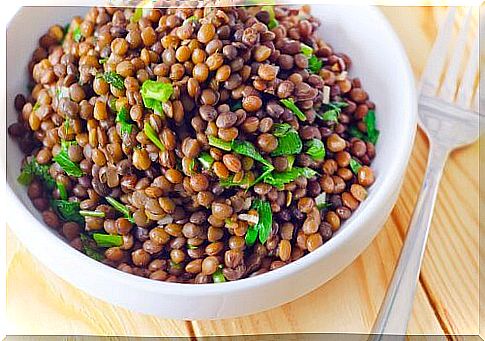
Precisely, according to numerous articles, lentils are a good source of iron, even the legume that has more of this mineral; as it contributes 37% of the recommended daily intake. They are, therefore, perfect in case of anemia, but it is advisable to take vitamin C, which helps the absorption of this mineral.
According to the Spanish Nutrition Foundation, they are also rich in manganese , providing 49% of the recommended daily intake. And in addition to this, they provide more than 10% of the daily intake of potassium, copper, phosphorus and zinc, and in less quantity, calcium and selenium.
In a cup of lentils we can find 358 mcg of folic acid, 90% of the recommended daily value. Other vitamins found in lentils include vitamin A, B vitamins, such as B1, B2, B3, B5, B6 and B12, choline; as well as vitamin C, K and vitamin E.
Benefits of lentils
A cup of dried lentils weighing about 200 grams makes two and a half cups of cooked lentils, and a single serving of this legume contains only 230 calories. Therefore, they are a healthy option to lose weight, since they provide a feeling of satiety.
On the other hand, the fiber content of this legume helps reduce cholesterol, maintain stable blood sugar levels and prevent constipation, given its fiber content.
Lentils are a healthy food for the heart, as they reduce the risk of coronary heart disease and also reduce the chances of suffering from prostate cancer. In addition to all this, they are rich in vitamins A and E, so they have antioxidant properties that can help delay the effects of certain degenerative diseases.
Other benefits
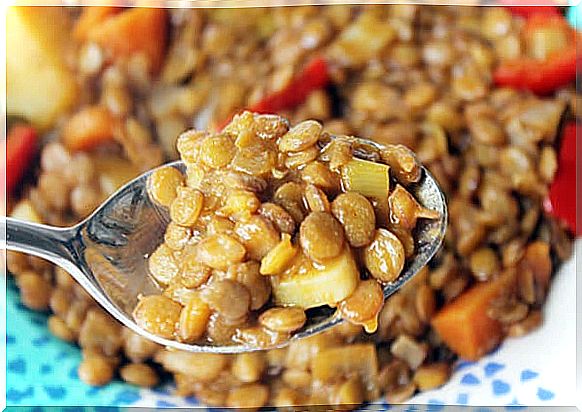
The list of properties and health benefits of lentils could be endless. We mention just a few more:
- Due to the amount of vitamins they have, they are good for the health of the skin, nails and hair.
- Both for the folic acid they contain and for the iron and zinc, they are appropriate during pregnancy.
- They contain slow-absorbing carbohydrates, so they can be taken by people with high blood sugar levels. In addition, studies agree that they have a very low glycemic index.
- They help regulate intestinal transit thanks to their fiber content
Precautions when taking lentils
As stated in this study by the University of Guayaquil (Ecuador), lentils contain purines, compounds that can be harmful to people who are prone to gout or kidney stones.
Purines can be a problem because they break down into uric acid, the substance builds up to become kidney stones, and creates crystals in the joints of people with gout.
However, keep in mind that plant-based purines may be less likely to cause problems than meat or fish sources.
How to get a complete protein with lentils
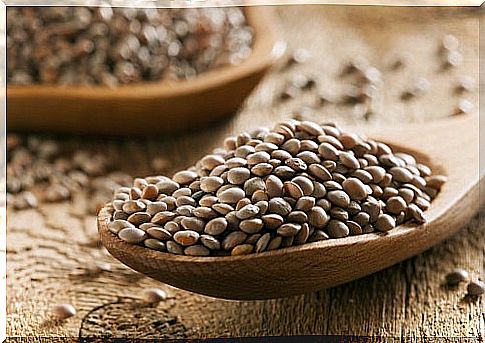
Pink lentils, and green in particular, can serve as a low-fat protein replacement, like meats and other animal-based foods. But it is essential to have other sources of protein in your diet apart from lentils. This is because they do not contain the essential amino acid methionine, nor the nonessential amino acid cystine.
It follows that all lentils are incomplete proteins. Therefore, for example, rice or other foods with methionine must be added to obtain a complete protein.
How to add lentils to the diet?
Another of the great advantages of lentils is that they are very versatile and can be added in various ways in the diet. In addition, unlike other legumes, they do not require prior soaking and cook in just 20 minutes.
Ideally, wash them well before cooking to remove any impurities. In general, you can include them in the diet through:
- Soups
- Cakes
- Stews.
- Salads
Properties of lentils: conclusions
In conclusion, as we have seen, consuming this legume provides important benefits in our diet. In fact, these benefits affect our health. However, it is absolutely essential to consult with your doctor or nutritionist to follow a balanced diet plan.




